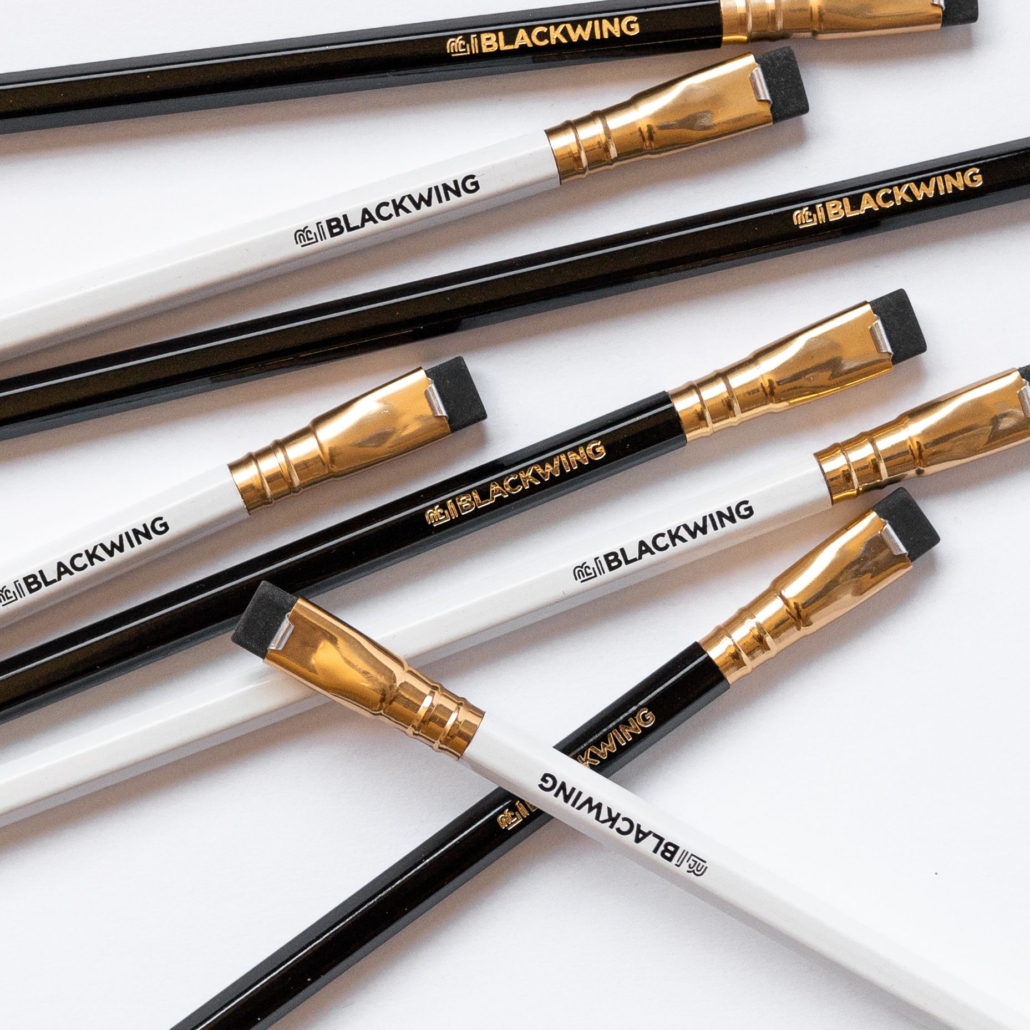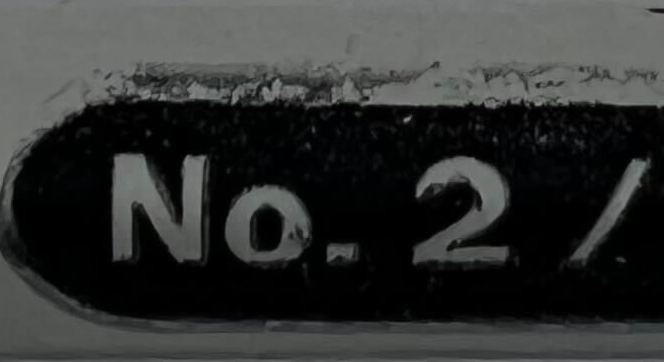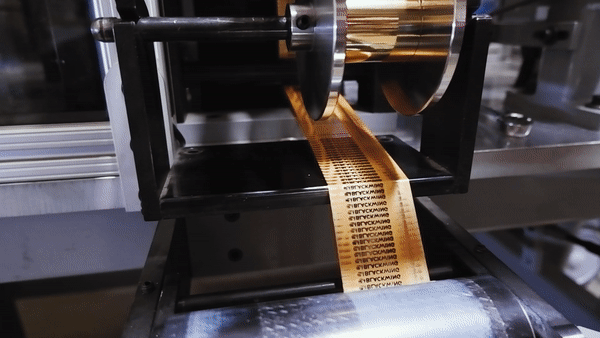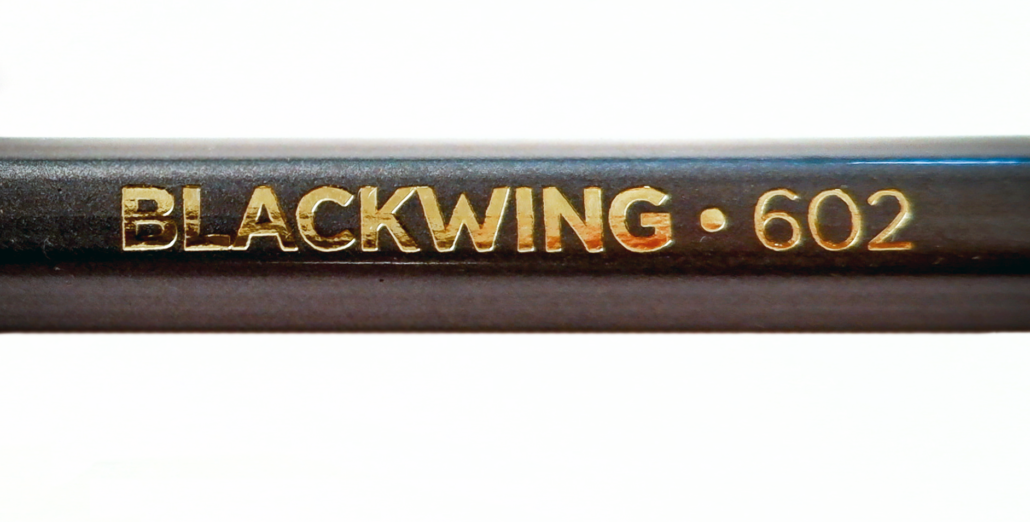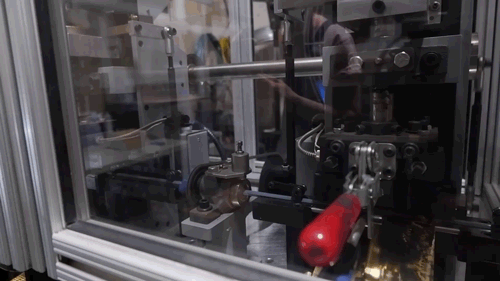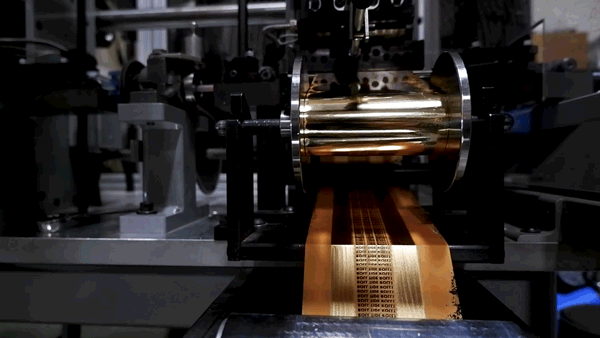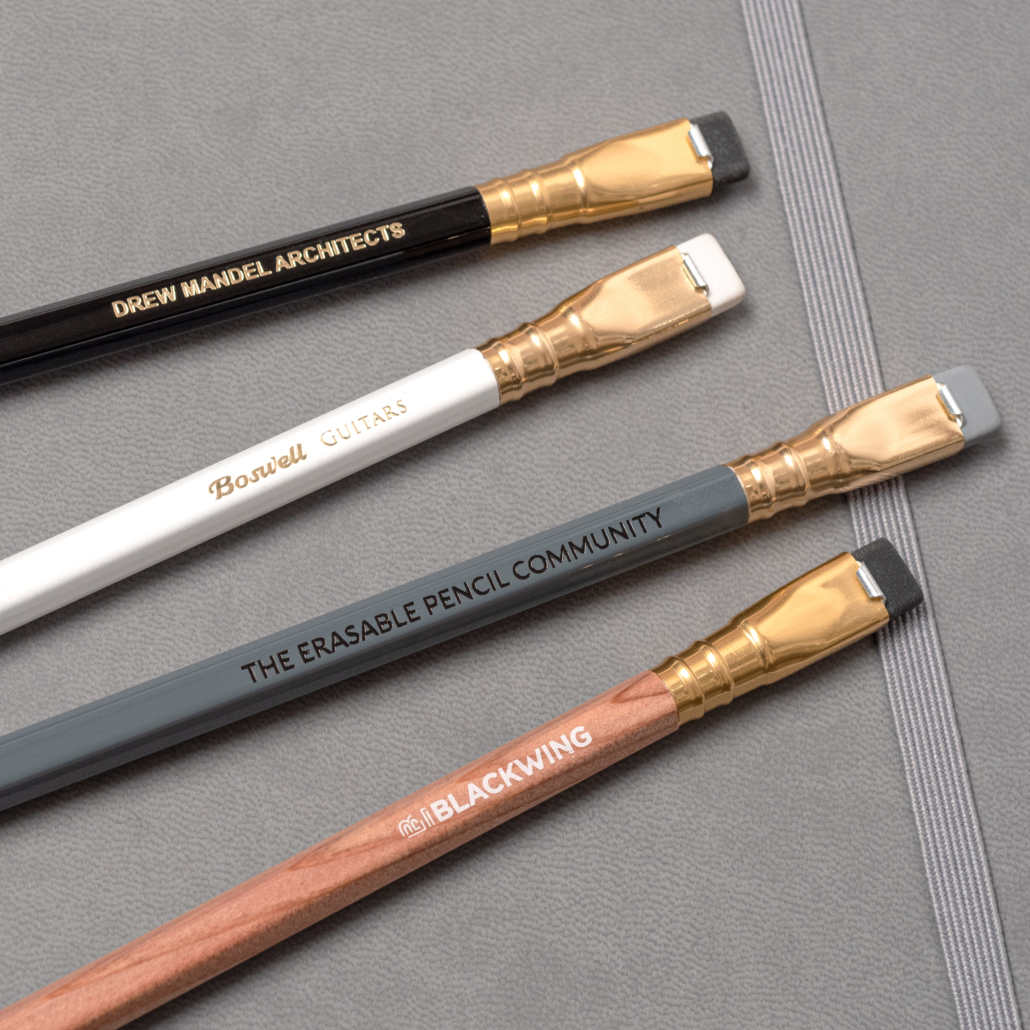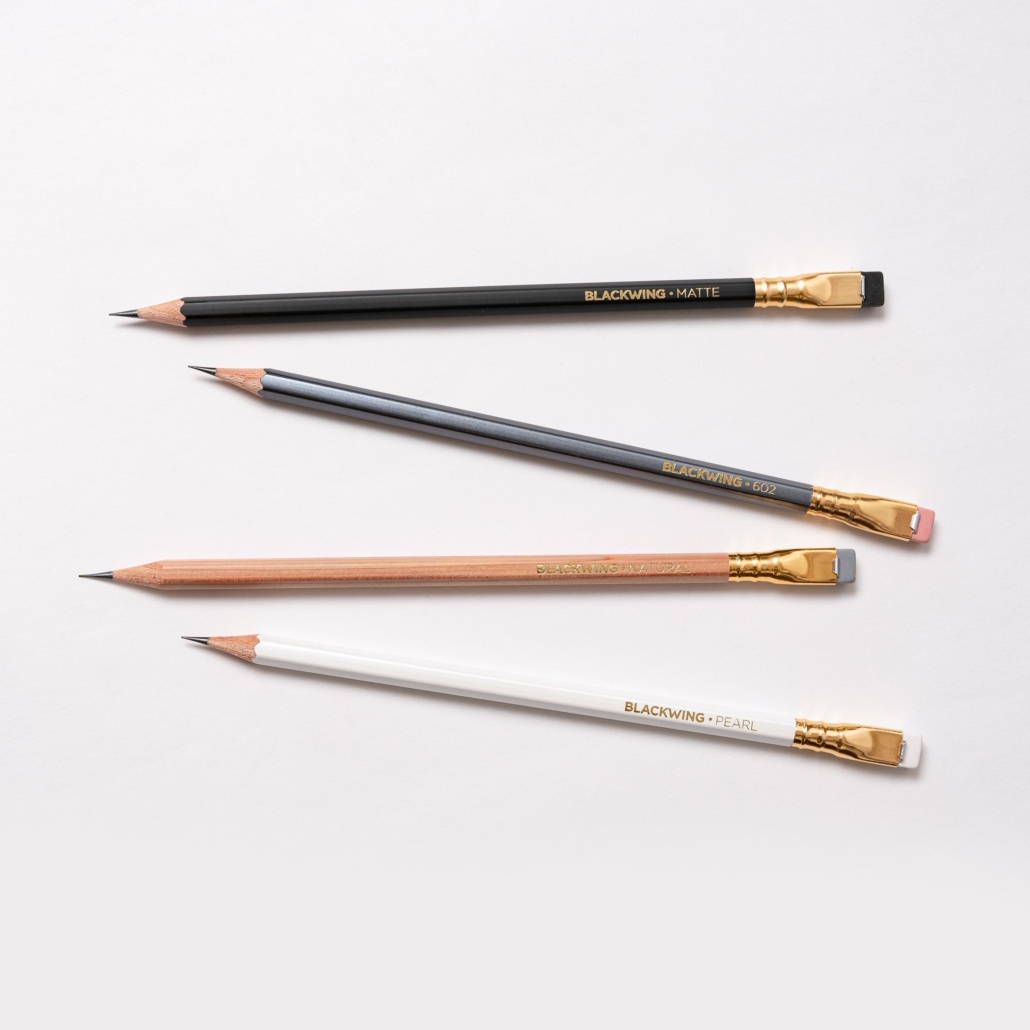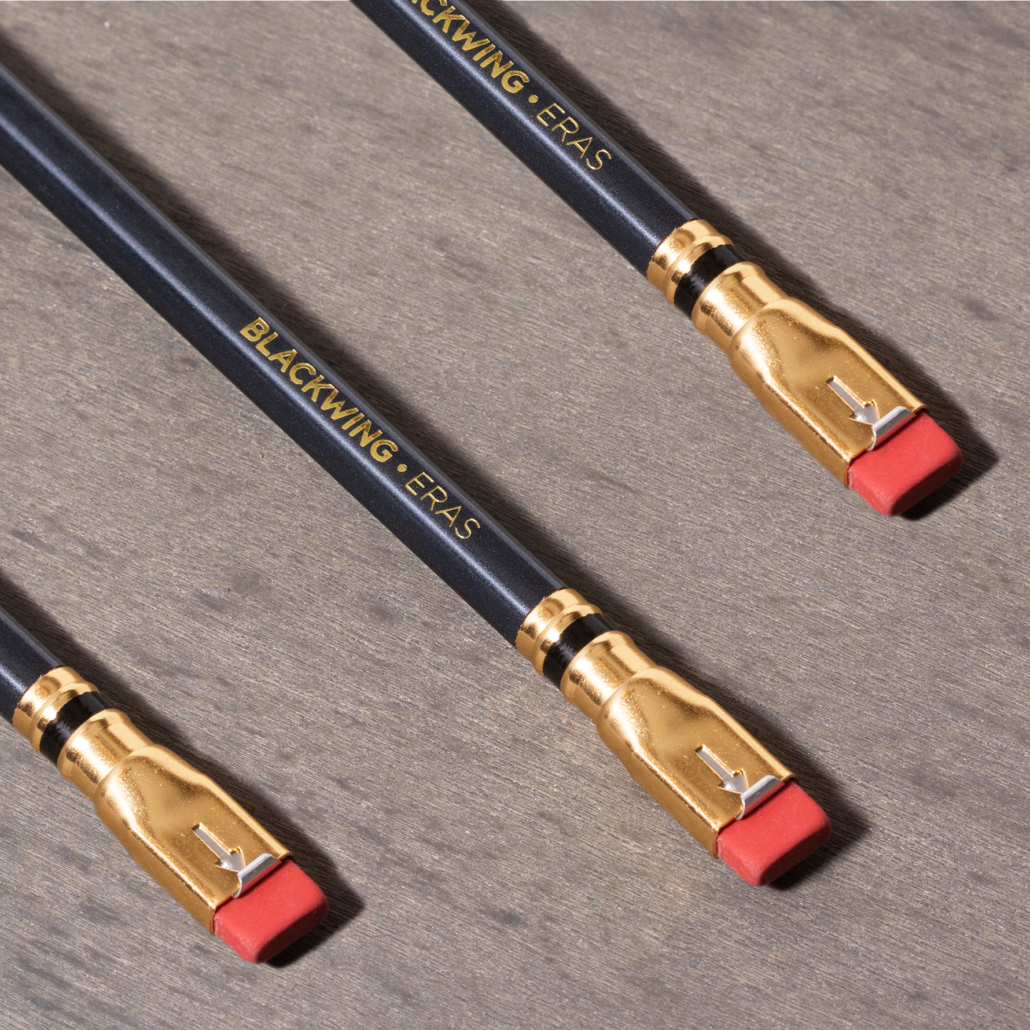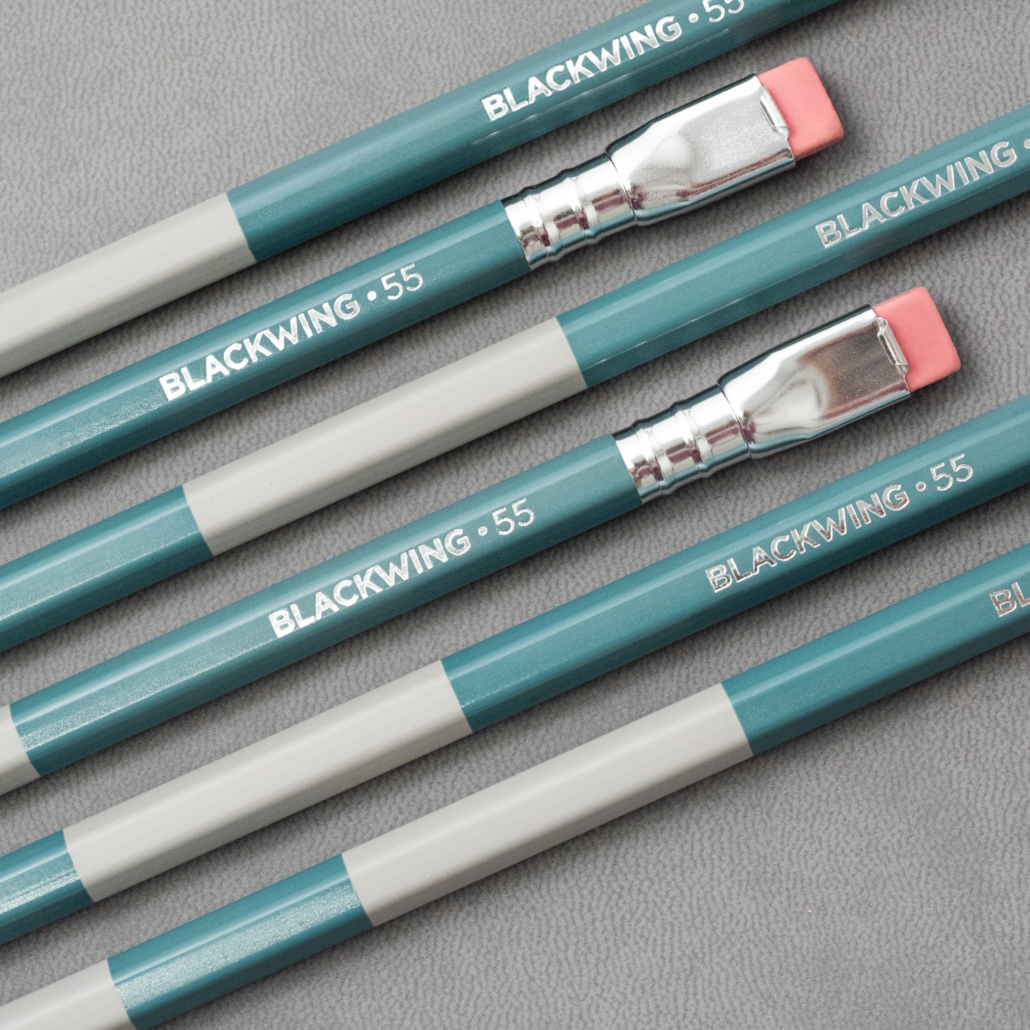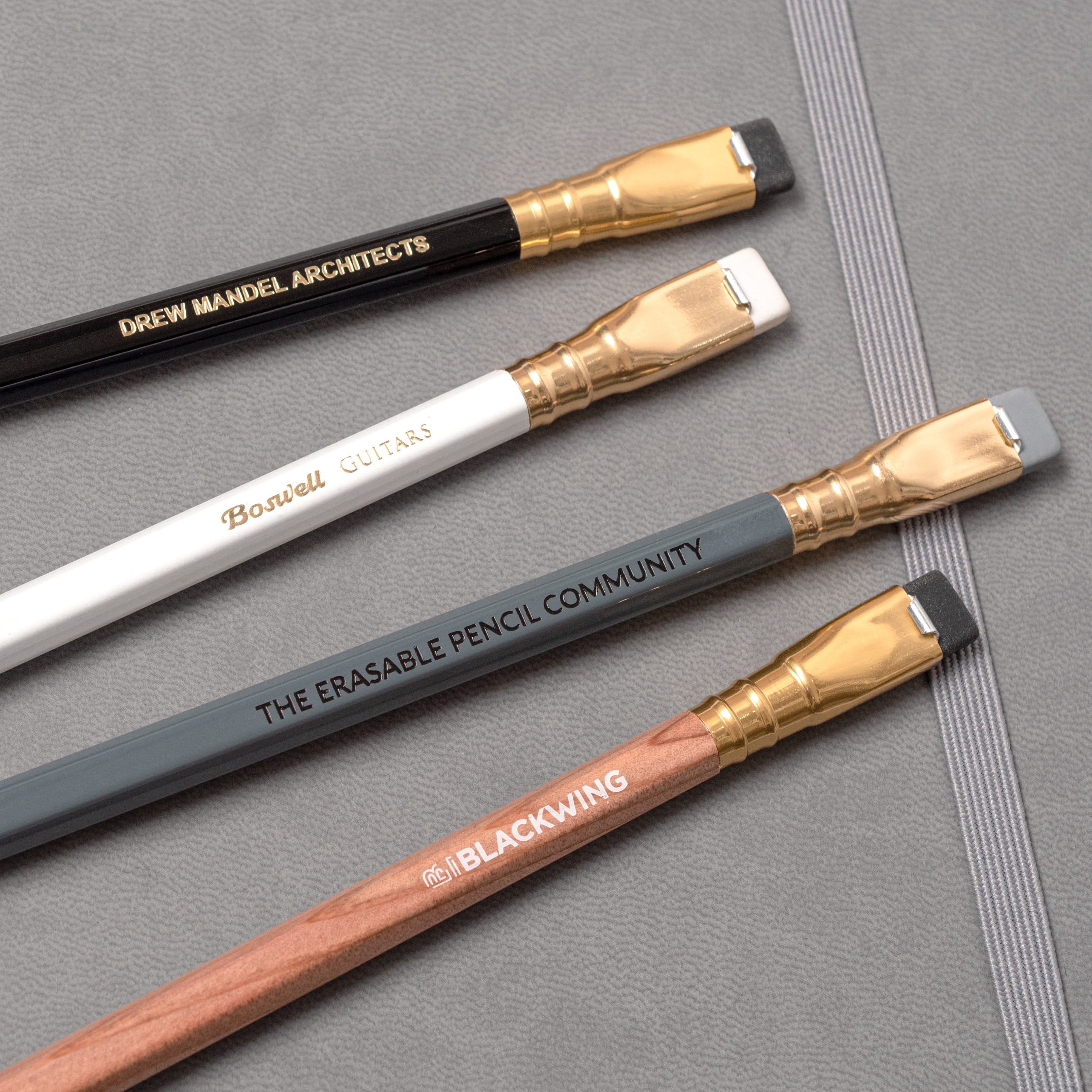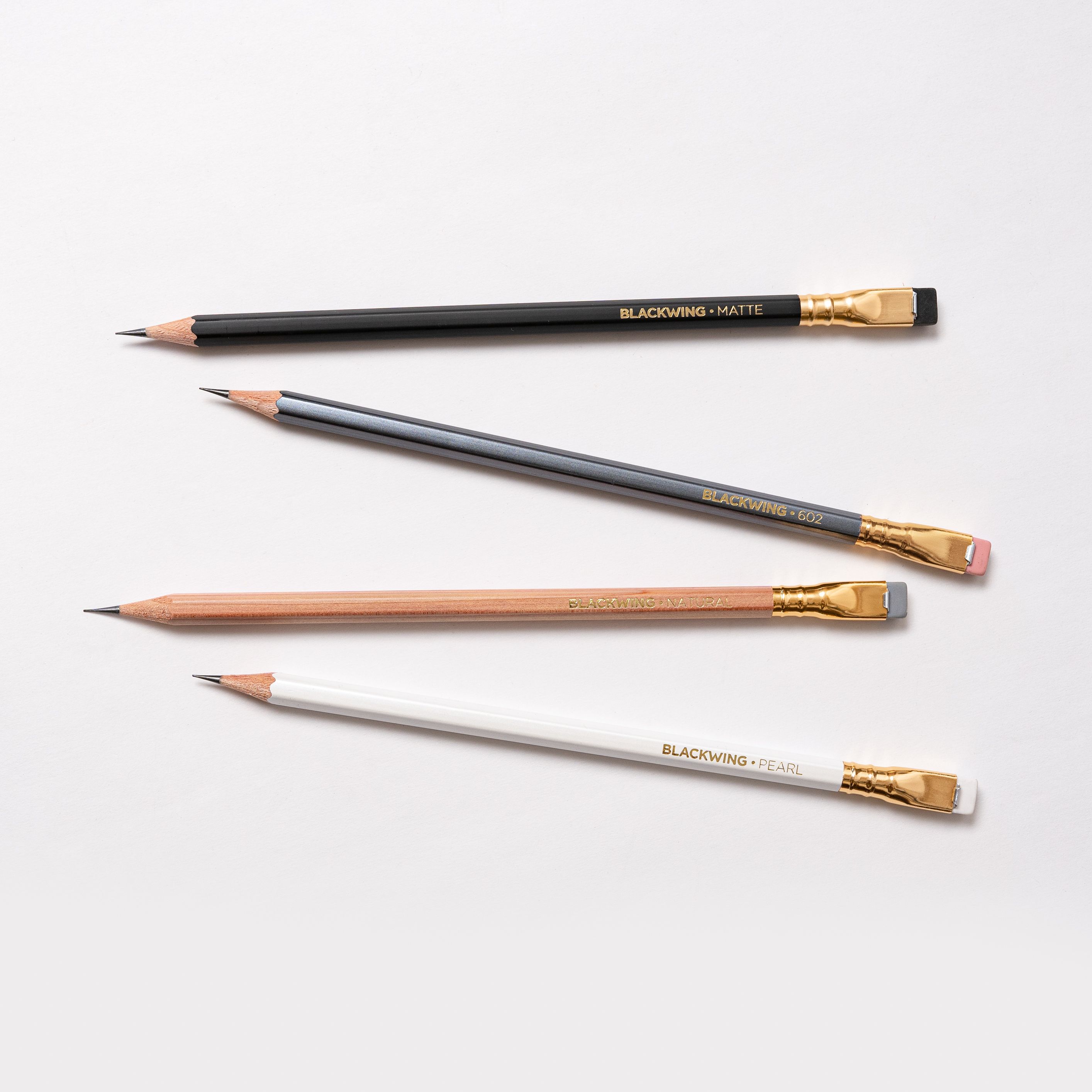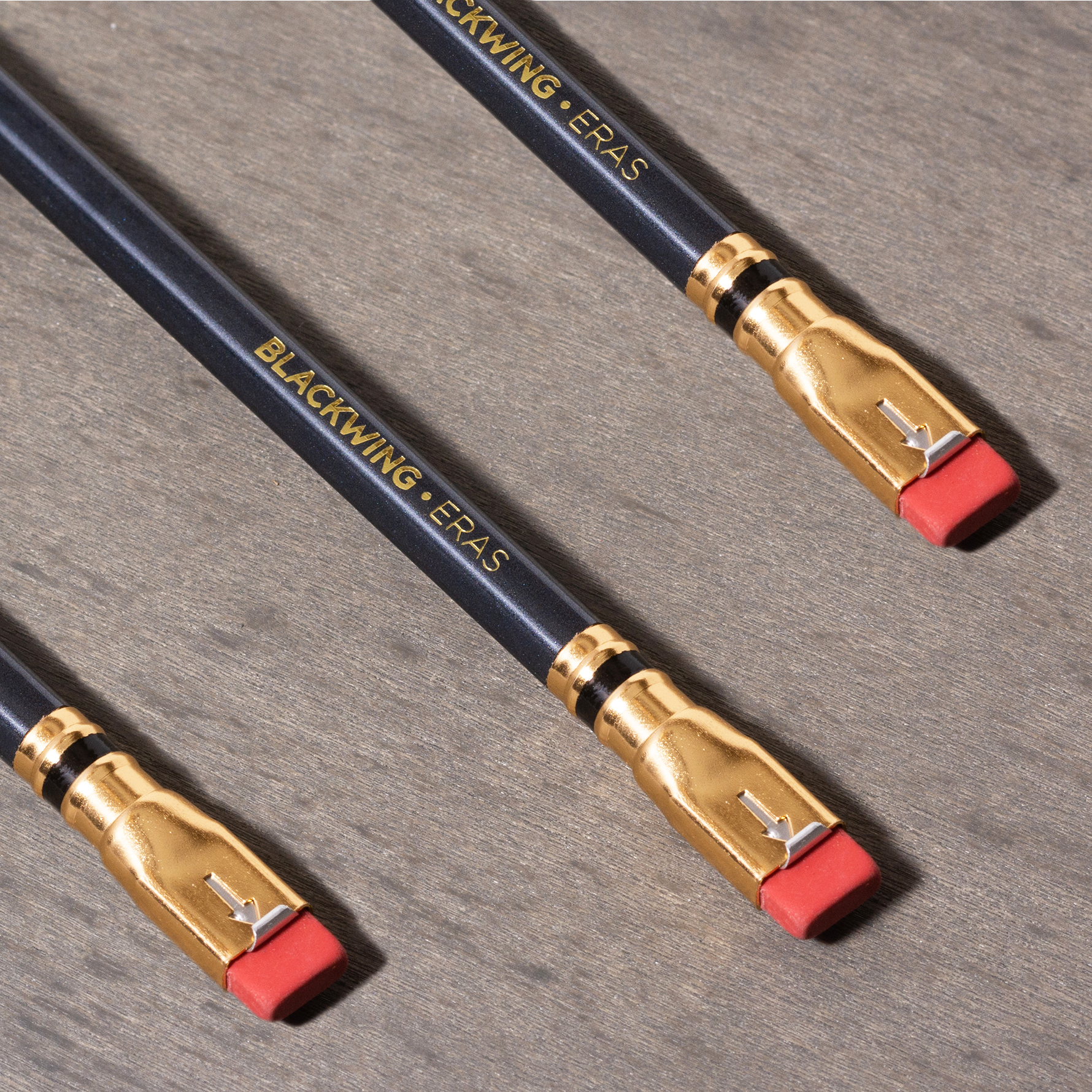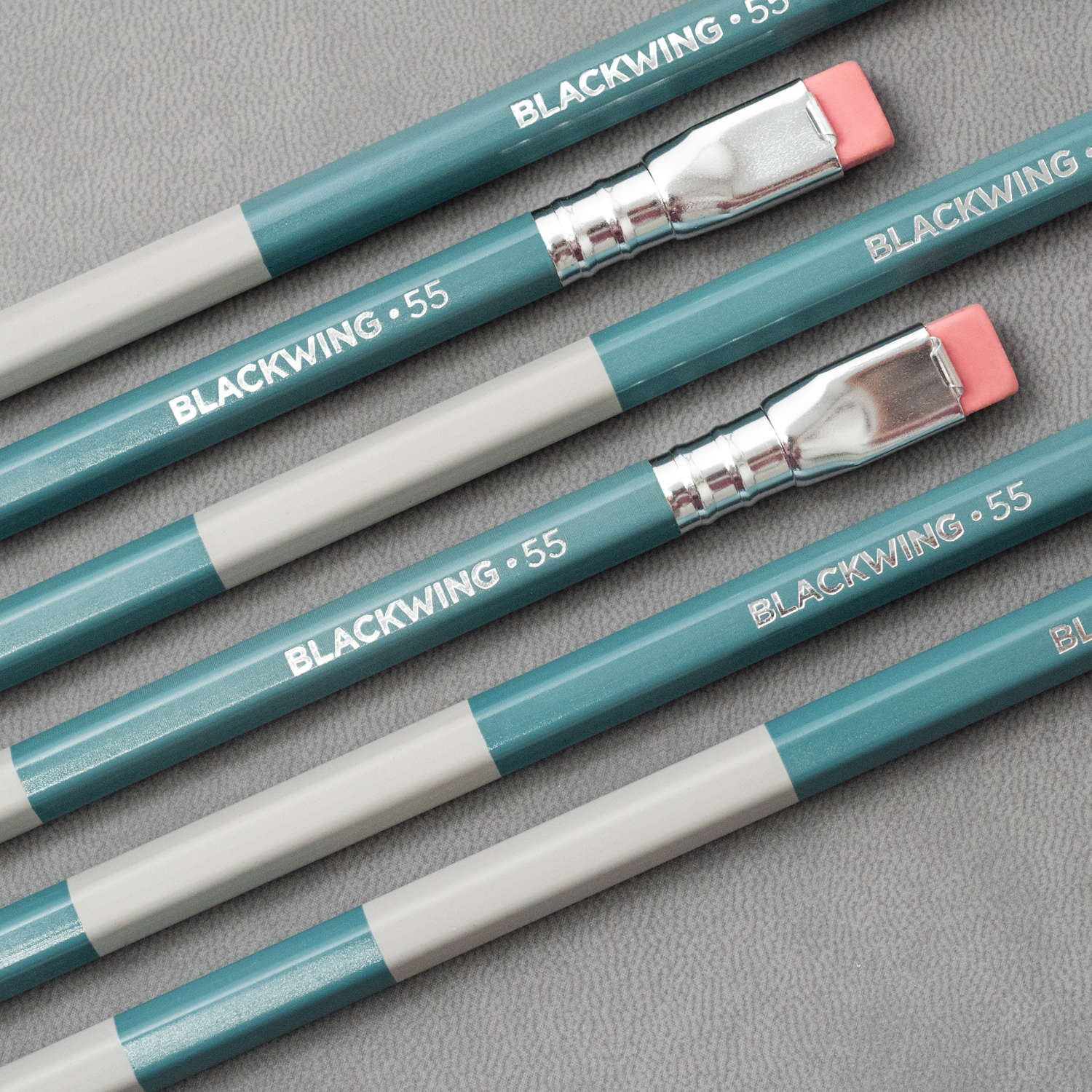The Blackwing Difference
Inside our Blackwing Imprinting process
We’re all about the process. We believe that being mindful in every step of the manufacturing process and using the highest-quality materials makes a difference. Take a closer look at how we put the stamp on our iconic Blackwing pencils.
How Most Pencils Are Printed
Most pencils available on the market, like the common yellow #2 pencil, are made from budget woods like basswood, white fir, or poplar. These wood types are more difficult to machine and are prone to imperfections, which leads to an uneven finish.
This uneven finish drastically affects the quality of the imprinting – often resulting in a poor imprint like the “crushed” and “ghosting” imprints seen above.
How Blackwing Pencils Are Imprinted
We use the best quality materials and a refined manufacturing process to ensure our imprints are crisp and clear. It begins with Genuine Incense-cedar, grown in our home state of California. This superior wood machines extremely well, resulting in a smooth wooden pencil stick.
While most common pencils have around 3 layers of lacquer, Blackwing pencils are coated with 7 or more layers of lacquer to ensure our pencils have a smooth finish to imprint on.
The attention to detail during the machining and lacquering process allows us to apply precise imprints to our pencils. The pressure and temperature on our imprint machine is finely tuned daily to deliver a higher quality stamp.
Our Blackwing imprints are stamped using steel and brass dies that deboss and apply foil directly onto our pencils. The result is a noticeably bright and crisp imprint.
From Blackwing Collaborations to custom imprint Branded Blackwing projects, our commitment to quality remains the same. Whether it’s our logo or yours, we go through the same process of creating custom-machined metal dies to ensure every single foil-stamped imprint meets our standards.

